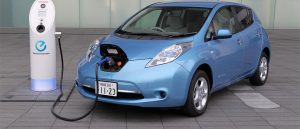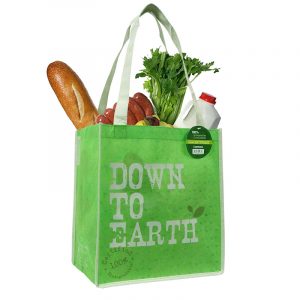A carbon footprint is defined as: The total amount of greenhouse gases produced to directly and indirectly support human activities, usually expressed in equivalent tons of carbon dioxide (CO2). Well what exactly does that mean? Let put this into layman terms. In other words: When you drive a car, the engine burns fuel which creates a certain amount of CO2, depending on its fuel consumption and the driving distance. (CO2 is the chemical symbol for carbon dioxide). When you heat your house with oil, gas or coal, then you also generate CO2. Even if you heat your house with electricity, the generation of the electrical power may also have emitted a certain amount of CO2. When you buy food and goods, the production of the food and goods also emitted some quantities of CO2. – timeforchange.org
Well this seems like things we use and do everyday. Am I right? So I have found a list from National Geographic of really easy and simple ways that you can help reduce your carbon footprint. Things that we do and use almost every single day. Even the smallest changes today can help our environment for tomorrow.
AT HOME
- Make sure your lighting is efficient. LED light bulbs generally use up to 80 percent less energy than traditional incandescents, and they last longer. (Here’s why CFLs, on the other hand, are falling out of favor.)
- Replace old appliances, such as refrigerators, washing machines, water heaters, and clothes dryers, with smarter models. In the U.S., the ENERGY STAR program certifies a range of products for energy efficiency.
- Adjust your thermostat up in warm months and down in cold ones, especially when you’re not home.

- Use cold water for washing clothes, then line-dry them.
- Recycle. The EPA estimates that recycling glass, aluminum, plastic, and paper could save 582 pounds of CO2 per year, equivalent to more than 600 miles of driving.
- Consider getting solar panels for your home or buying renewable energy credits.
ON THE ROAD
- Save on gas with an electric, hybrid, or super fuel-efficient car. (Check out this electric car calculator from the Union of Concerned Scientists, which helps you take into account the electricity source where you live.)

- Maximize fuel efficiency, no matter what model you drive: Keep tires inflated, avoid speeding, keep your trunk free of excess weight—and above all, avoid driving when you can walk, bike, carpool, or take public transit.
- Reduce your flight travel where you can, and remember that, unfortunately for your personal comfort, first- and business-class seats have a higher carbon footprint than economy ones. (You can find the most efficient airlines ranked here.)
AT THE STORE
- Buy less meat, and opt for sustainable sources when it comes to what you do purchase. By one estimate, consuming a pound of beef gives off more carbon than burning a gallon of gasoline.
- Bring your own bags and buy in bulk when possible to reduce packaging.

- Reduce your consumption of bottled water and other packaged drinks. In general, driving up demand for plastic means doing the same for fossil fuels.Consider the global impact of acquiring more stuff. One study found that a big share of China’s pollution was associated with goods manufactured for export to the U.S. and elsewhere.
With reading all these you are probably thinking there is absolutely no way I can do all these. And of course not! No one is telling you need to do each and every single one. But start even at the grocery store by bringing your own bags with you. Or take advantage of a nice sunny day and hang your clothes outside and let sun dry them. Just think if everyone did just one thing how much better off our environment would be.


